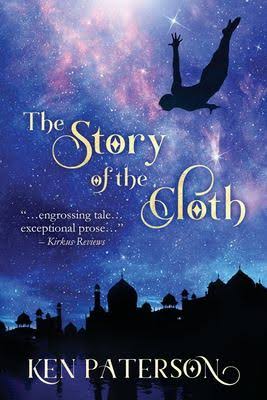Mixing It Up
Ken Paterson is a freelance writer. Recent publications include the online course Spoken Grammar: a Guide for English Language Teachers (udemy.com) and a novel, The Story of the Cloth (amazon.co.uk). He has a website at www.kenpatersonwriter.com


Ken Paterson reflects on the simultaneous writing of a novel and a course for teachers
A couple of years ago I found myself writing two things at the same time: a novel and a course for teachers on spoken grammar. At first I reckoned that these two activities would be entirely separate, one a refreshing break from the other. Then the processes began to bleed into each other, and I discovered some unexpected similarities.
A novel should be a leap into the dark. You can have a setting and a rough plotline worked out, but at some point – unless your novel is purely formulaic – you have to let the wind fill your sails and take you where it will. My novel was to be set in London and southern France; soon it was blown eastwards to the coast of Oman and the foothills of the Zagros Mountains in Iran.
Teaching is the same. There may be a lesson plan in front of you, but things will often flow in new directions. Your students, after all, are like the characters in a novel. They have voices of their own, which – if you let them – may shape the entire arc of your lesson. As I finished a chapter of my book, I would find myself returning to the activities in my course, making them more open-ended and allowing teachers greater scope for personalization.
In ELT, you necessarily keep an ear open to the variety and style of spoken English. You may write dialogues or reformulate student language to make it more natural. You might, like me, wander down the paths of spoken grammar, following in the footsteps of Ronald Carter and Michael McCarthy. So when you write fiction, you have an advantage. However keen you are to move the story along in narrative passages, you soon realise that its beating heart lies in the rhythm of the conversations.
Characters in novels are like Frankenstein’s monster: an amalgam of the appearance, individualism, gesture, voice – and the stories – of the people we’ve known. With a surge of creative electricity, they come to life (and you can’t see the stitching). As classroom teachers, what characters we’ve met over the years! A key figure in my novel was sparked by an Omani teacher who attended my classes in the late 1990s: an ebullient, humane, middle-aged man with a gift for anecdote. And a Swedish student once told the class of an extraordinary dream where she stood by a hotel window, watching the centuries pass by outside: wild grasses breaking through the paving stones; department stores crumbling; tigers chasing gazelles in the jungle of Russell Square. Reader, I stole it.
Finally, language teachers, as a matter of course, develop a keen awareness of lexical and structural choice. We’re good at finding the right word or phrase: an adjective that precisely fits the bill; an action verb when it’s required; a synonym or elliptical device to avoid the dull thud of repetition. Immersed as I was in telling a story, I couldn’t help but notice the structural devices – participles, clefts, verbless clauses – that allow you to avoid the boring tread of ‘She did this. Then she did that. Next she did something else.’ I’ll finish with a melodramatic example (not from my novel!) that contrives to include all three of the structures above:
Kelly raced through the forest at dusk, stumbling occasionally, the distant sound of gunfire forcing her onwards. It was only when she had climbed a tree, her rucksack on her back and the day still hot, that she could finally make out the turrets of the castle
Why Will Private Tutoring Be the Next Colossal Trend in the Education Industry?
Vinisha Joshi, IndiaMixing It Up
Ken Paterson, UK